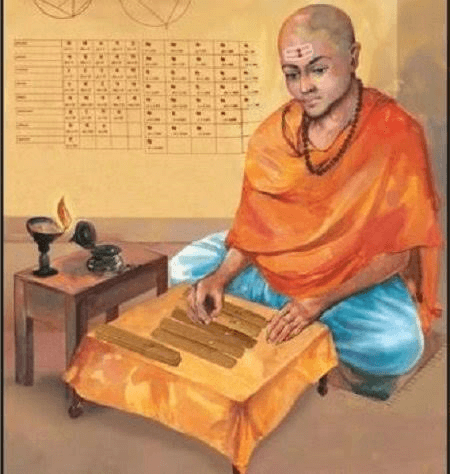
Quick Info
Born
598
(possibly) Ujjain, India
Died
670
India
Summary
Brahmagupta, the preeminent mathematician of his era in India, achieved significant breakthroughs in multiple domains, particularly in astronomy and, most notably, in the realm of number systems. His contributions encompassed the development of algorithms for calculating square roots and solving quadratic equations.
Biography
Brahmagupta, whose father was Jisnugupta, authored significant works in mathematics and astronomy. One of his notable works, the “Brahmasphutasiddhanta,” was written in 628, spanning 25 chapters. Brahmagupta composed this text in Bhillamala, which is modern-day Bhinmal, the capital of the Gurjara dynasty’s domain.
Brahmagupta held the prestigious position of head of the astronomical observatory in Ujjain, a leading mathematical center in ancient India. This institution had been the academic home to exceptional mathematicians like Varahamihira, fostering a thriving school of mathematical astronomy.
The “Brahmasphutasiddhanta” comprises 25 chapters. The initial ten chapters are believed by many historians to represent the early version of Brahmagupta’s work, and some manuscripts exclusively contain these chapters. These chapters encompass topics typical of Indian mathematical astronomy texts of that era. They address subjects such as mean longitudes of planets, true longitudes of planets, diurnal rotation problems, lunar and solar eclipses, planetary risings and settings, the moon’s crescent, planetary conjunctions, and celestial conjunctions with fixed stars.
The remaining fifteen chapters appear as a substantial addendum to the original treatise. These chapters cover various aspects, including the examination of prior astronomical treatises, mathematics, and additional content for the earlier chapters. There are also sections on algebra, the gnomon, meters, the celestial sphere, instruments, a summary of contents, and versified tables.
Brahmagupta’s grasp of number systems surpassed his contemporaries. In the “Brahmasphutasiddhanta,” he defined zero as the result of subtracting a number from itself, along with several associated properties. Additionally, he introduced arithmetical rules employing fortunes (positive numbers) and debts (negative numbers). His work even ventured into division by zero, showing his remarkable effort to extend arithmetic to encompass negative numbers and zero.
The mathematician presented multiplication methods that effectively utilized the place-value system, similar to contemporary techniques. One method he described, known as “gomutrika,” is akin to modern multiplication and showcases his profound understanding of mathematics.
Brahmagupta also contributed to algebraic notation and offered methods for solving quadratic equations. He addressed indeterminate equations of the form ax + c = by, demonstrating his expertise in this domain. His work on solving quadratic indeterminate equations resulted in elegant solutions for various cases.
Brahmagupta’s “Brahmasphutasiddhanta” includes formulas for the area of cyclic quadrilaterals and the lengths of their diagonals, although some debate exists regarding the applicability of these rules only to cyclic quadrilaterals.
In the realm of astronomy, Brahmagupta covered topics like solar and lunar eclipses, planetary conjunctions, and planetary positions. He believed in a stationary Earth and provided estimations for the length of a year, which underwent a slight adjustment in his later work, the “Khandakhadyaka.”
The “Khandakhadyaka,” consisting of eight chapters and an appendix, delves into planetary longitudes, diurnal rotation problems, eclipses, planetary positions, risings and settings, the moon’s crescent, and planetary conjunctions. Notably, this work includes an interpolation formula used to compute sine values, which has been analyzed in greater depth by scholars.
Overall, Brahmagupta’s contributions to mathematics and astronomy have left an enduring legacy, and his pioneering work continues to be celebrated for its profound insights and innovations.


